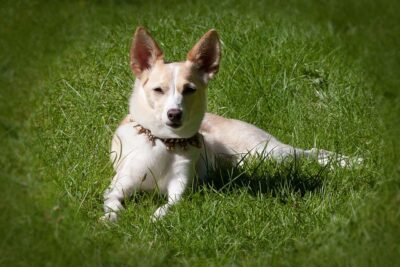

In order to obtain a dog's pedigree in Spain, the first requirement is to verify the breed of the dog. The dog must belong to a recognized breed and meet the breed standards set by the respective kennel club. This is important because pedigrees are only issued for purebred dogs.
The breed verification process usually involves a physical examination of the dog by a qualified veterinarian or a breed specialist. The examiner will assess the dog's physical characteristics, such as size, coat color, and body structure, to determine if it meets the breed standards.
It's important to note that mixed breed dogs or dogs with unknown parentage are not eligible for pedigrees in Spain.
Once the breed verification is complete, the next step is to register the dog with a recognized kennel club in Spain. The kennel club will be responsible for issuing the pedigree certificate.
There are several kennel clubs in Spain that are recognized by the Fédération Cynologique Internationale (FCI), which is the international canine organization. Some of the well-known kennel clubs in Spain include the Real Sociedad Canina de España (RSCE) and the Asociación Canina Nacional (ACAN).
To register the dog, the owner will need to fill out an application form provided by the kennel club. The form will require information about the dog's breed, date of birth, gender, and any other relevant details. The owner may also need to provide proof of breed verification, such as a certificate from the veterinarian or the breed specialist.
In addition to breed verification, certain breeds may require health testing before a pedigree can be issued. This is to ensure that the dog is free from any genetic or hereditary diseases that are common in the breed.
The specific health tests required will vary depending on the breed. Common health tests include hip and elbow dysplasia screening, eye examinations, and genetic testing for specific conditions.
The owner will need to schedule an appointment with a veterinarian or a specialized clinic to perform the required health tests. The results of the tests will need to be submitted along with the application for the pedigree.
In some cases, certain breeds may require DNA testing to confirm parentage before a pedigree can be issued. This is particularly important for breeds with strict breeding regulations or for dogs that are imported from other countries.
The DNA testing process involves collecting a sample of the dog's DNA, usually through a cheek swab or a blood sample. The sample is then sent to a laboratory for analysis. The laboratory will compare the dog's DNA with the DNA profiles of its parents to confirm parentage.
If DNA testing is required, the owner will need to follow the specific instructions provided by the kennel club or the laboratory. The results of the DNA test will need to be submitted along with the application for the pedigree.
Once all the necessary requirements have been fulfilled, the owner can proceed to submit the application for the dog's pedigree. The application form, along with any supporting documents, should be sent to the kennel club's office by mail or in person.
It's important to ensure that all the information provided in the application is accurate and complete. Any discrepancies or missing information may result in delays or rejection of the application.
The kennel club will review the application and verify the information provided. If everything is in order, the application will proceed to the next step of the process.
Obtaining a dog's pedigree in Spain involves certain fees that need to be paid. The exact amount will vary depending on the kennel club and the services required.
The owner will need to pay the required fees along with the application. The kennel club will provide information on the accepted methods of payment, such as bank transfer or cash payment.
It's important to keep the receipt or proof of payment as it may be required for future reference or for any follow-up inquiries.
Once the application and fees have been processed, the kennel club will issue the dog's pedigree certificate. The certificate will include detailed information about the dog, such as its registered name, date of birth, breed, and the names of its parents.
The pedigree certificate serves as an official document that confirms the dog's lineage and purebred status. It is often required for participating in dog shows, breeding programs, or for any other activities that require proof of pedigree.
The owner will typically receive the pedigree certificate by mail or can collect it in person from the kennel club's office. It's important to keep the certificate in a safe place as it may be required for future reference or for any official purposes.
Once the dog's pedigree has been obtained, it's important to maintain accurate records of the pedigree and any related documentation. This includes keeping copies of the pedigree certificate, health test results, DNA test results (if applicable), and any other relevant documents.
These records may be required for future reference, such as for breeding purposes or for participating in dog shows. It's also important to update the records if there are any changes to the dog's information, such as a change in ownership or any additional health tests.
By maintaining accurate pedigree records, the owner can ensure the dog's lineage is preserved and can provide proof of the dog's purebred status whenever required.
Obtaining a dog's pedigree in Spain requires fulfilling certain requirements and following a specific process. By verifying the breed, registering with a recognized kennel club, completing health and DNA testing if required, submitting the application, paying the fees, and maintaining accurate records, dog owners can obtain a pedigree certificate that confirms their dog's lineage and purebred status.
Related posts